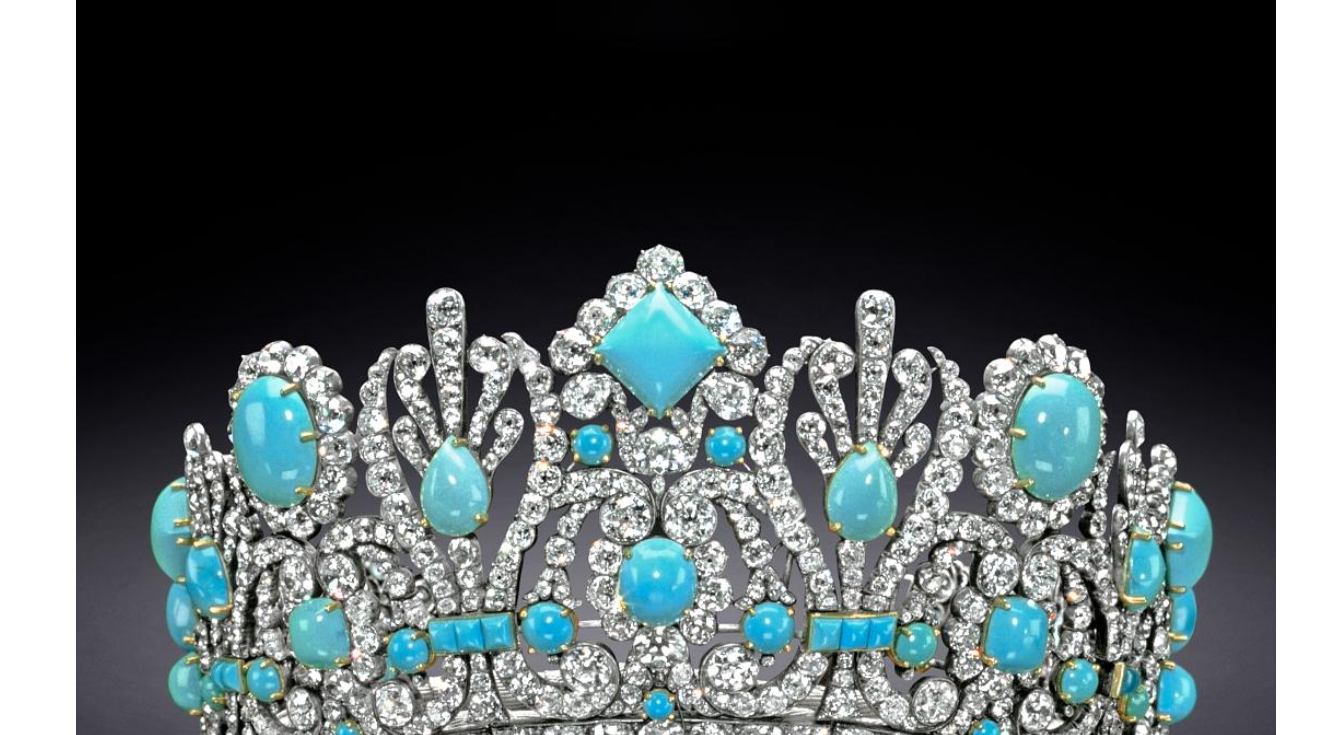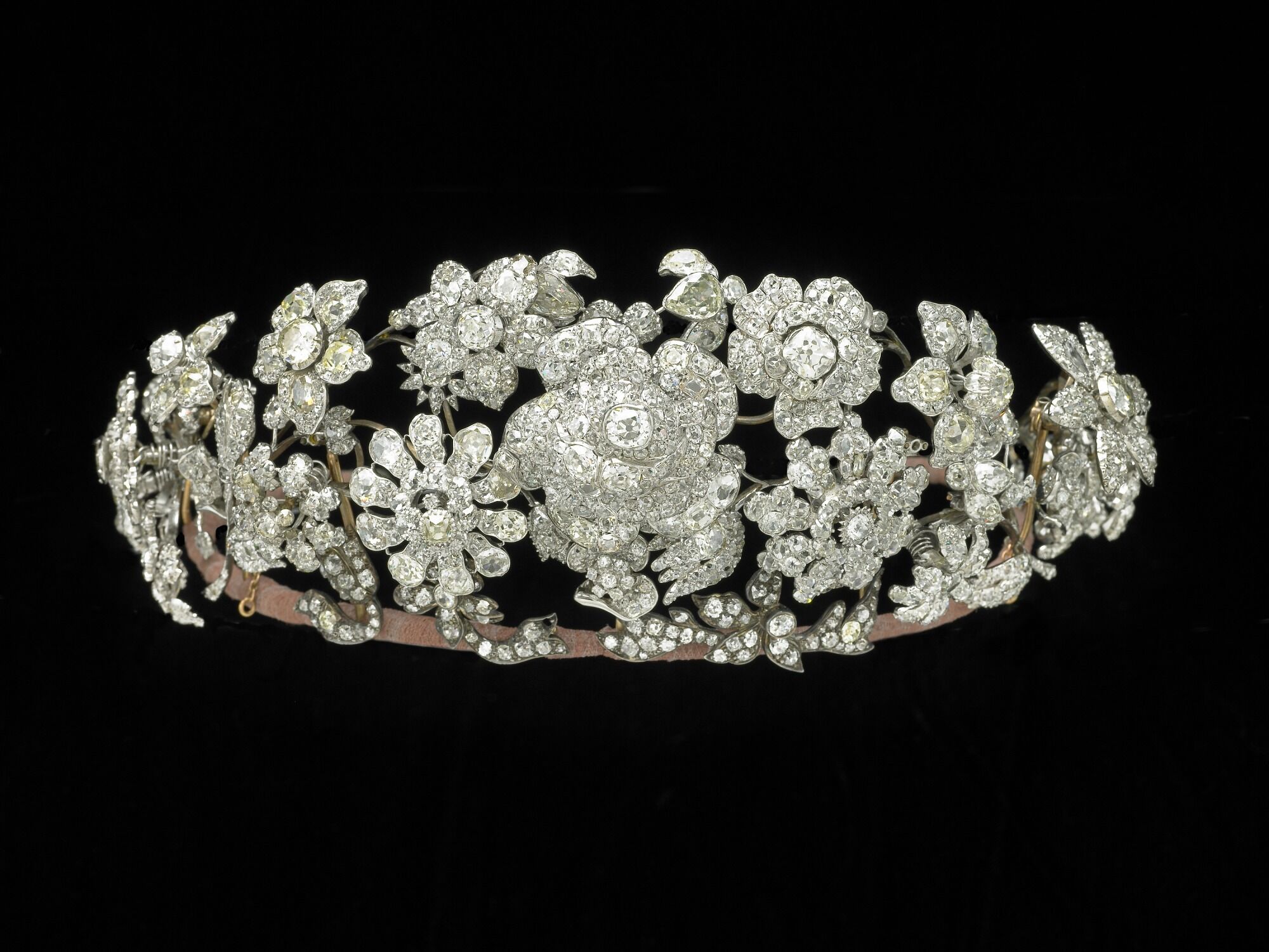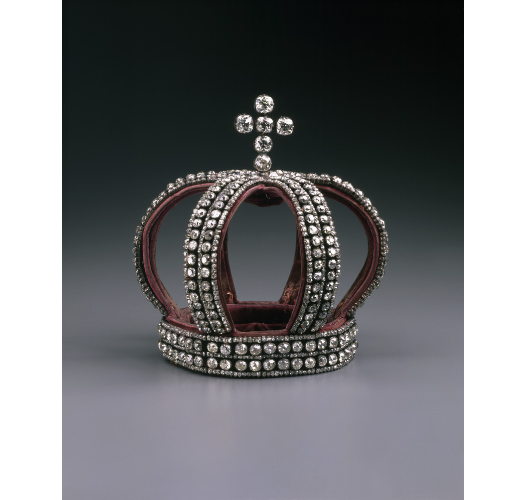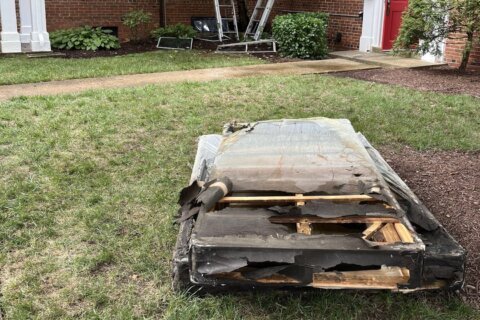Saturday marks a historic event the whole world will witness — the coronation of King Charles III.
The last British coronation happened almost 70 years ago in 1953, and as with any festive royal display of pomp and circumstance, there’s anticipation on what members of the royal family will be wearing and what glittering jewels will make an appearance.
But you don’t have to go all the way to London to see fabulous and historical baubles. Right here in D.C., you can see some brilliant royal jewels that once adorned the head of an empress or two.
One example is the Marie Louise diadem on display at the Smithsonian National Museum of Natural History. It was a gift by French Emperor Napoleon to his second wife Marie-Louise when they married. The diadem’s design consists of scrolls, palmettes and medallions and has 79 Persian turquoise stones and 1,006 cut diamonds set in silver and gold, the museum said.

Dating back to the 1810s, it was made by the French court jeweler Etienne Nitot et Fils, and was originally set in emeralds. When it was acquired by Van Cleef & Arpels in the 1950s, the emeralds were disassembled to be set in rings, brooches and bracelets; and the diadem was reset in turquoise, which, Megan Martinelli, associate curator of Apparel, Textiles, Jewelry and Accessories at Hillwood Estate, Museum and Gardens in D.C., said was “less expensive and more fashionable in the 1950s and 1960s.”
Hillwood was the Washington home of cereal heiress Marjorie Merriweather Post, who acquired the diadem in 1971 and soon after bequeathed it to the Smithsonian.
Post borrowed it for the Red Cross Ball in 1967 and bought it four years later, Martinelli said.
“A lot of people find it unfortunate that the original emeralds were removed,” Martinelli said. “But this is kind of the idea of recycling pieces for future generations.”
Post and members of her family also gifted the Smithsonian other pieces of jewelry with royal provenance, including a diamond necklace Napoleon gave Marie-Louise and earrings believed to have been made with diamonds that belonged to Marie Antoinette, the queen of France who was guillotined during the French Revolution.
Another jewel with royal provenance is in the Smithsonian National Museum of American History. It is a floral tiara, not currently on display, dating back to the 1830s, which once belonged to Archduchess Anna of Austria, of the abolished Saxon royal family.

Martinelli said Post wore the “Anna” tiara often and made entries in her scrapbook when the tiara made an appearance at a function.
“She had a fancy dinner party with some of her friends and relatives at the embassy in Brussels. And you can see her scrawl like, ‘It was Anna’s debut that night.’ So, I think she had kind of a playful approach to wearing these really significant pieces of jewelry,” Martinelli said.
At the Hillwood Museum, you can see on display an actual crown. It’s a nuptial crown worn by Empress Alexandra during her marriage to Nicholas II, the last Russian tsar.

There’s no indication Post ever tried to wear the crown, Martinelli said, but she collected a lot of things for their historical value, and that includes memorabilia from previous British coronations in the 20th century.
A souvenir she collected from past coronations are replicas of the anointing spoon, used during the most sacred part of the coronation ceremony.
Martinelli said Post began attending coronation festivities in the U.K. when she was a young woman, starting with King Edward VII’s coronation in 1901 up until Queen Elizabeth II’s in 1953.
It is not known if Post ever met Queen Elizabeth II, but Martinelli said Post was in England during her coronation and perhaps attended festivities surrounding the event.
Post’s appreciation for things with royal provenance and her interest in the British royal family can be seen throughout Hillwood, from the second-floor library decorated with miniatures of Queen Elizabeth II’s heraldic symbols to a special coronation chair from the 1937 coronation of Elizabeth II’s father, King George VI.
#MarjorieMerriweatherPost attended the coronation of King George VI #OnThisDay in 1937. #TBT https://t.co/mQJS6MOGCC pic.twitter.com/hqd7DR8DZQ
— Hillwood Museum DC (@HillwoodMuseum) May 12, 2016
‘Most ostentatious piece of jewelry’ anyone can wear
It is rare to have 20th century jewelry collections remain intact like Post’s, Martinelli said — with some kept at Hillwood and complementary pieces nearby at the Smithsonian.
“I think for a lot of people, it’s hard to imagine wearing a tiara. It feels like the most ostentatious piece of jewelry or accessory that anyone can wear. But you get a sense of her playful attitude for it,” Martinelli said.
Lauren Kiehna, who writes a blog about royal jewelry called The Court Jeweller, said that there are no restrictions on who can wear a tiara.
“If you are invited to a formal event where tiaras are expected to be worn, and you have access to a tiara, you can wear a tiara,” Kiehna said in an email.
“You don’t have to be married, and you don’t have to be a member of a royal or aristocratic family — though royals and nobles are invited to fancy, tiara-appropriate functions much more often than the rest of us.”
While Post had access to tiaras and tiara-appropriate functions in her time, Martinelli said that Post was really interested in the craftsmanship and the history of the pieces she collected, as well as their handmade and personalized element.
“So it was more than just a hobby for her. And then there’s also the element of her kind of wanting to elevate the U.S. and leaving her collection in the capital, as a nice … collection of beautiful objects from centuries past,” Martinelli said.








